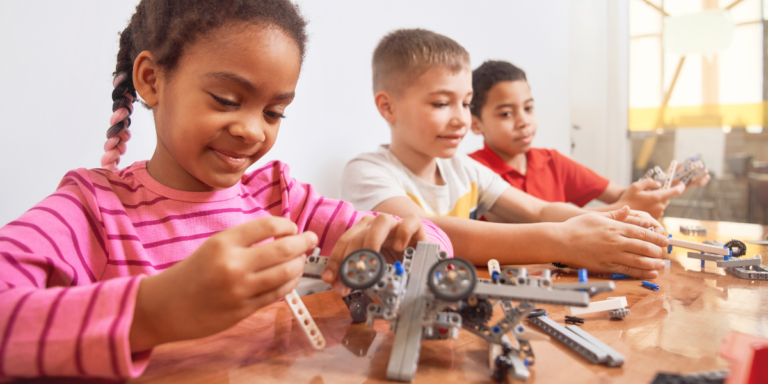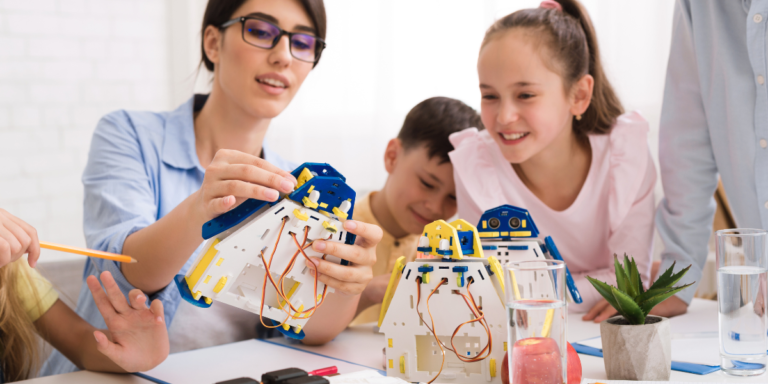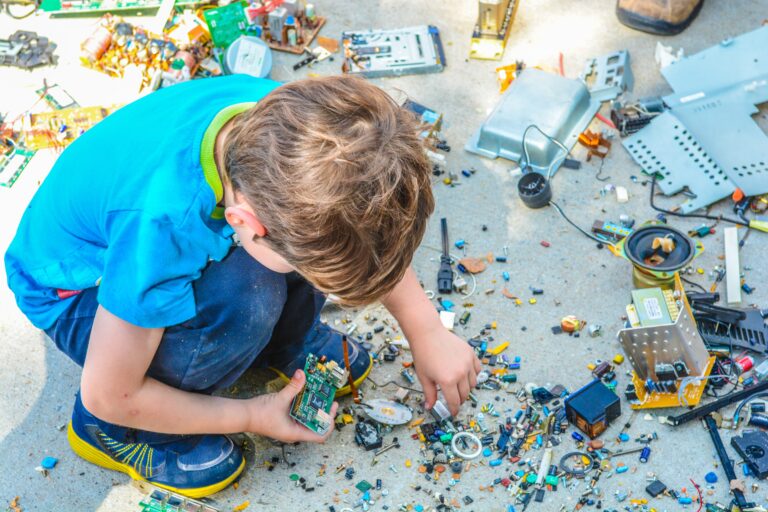How to Incorporate STEM Activities into Your Child’s Daily Routine

As the world becomes more reliant on technology, the need for STEM (science, technology, engineering, and math) education has become increasingly important. However, it can be challenging to find ways to incorporate STEM activities into a child’s daily routine. So, let’s explore creative and fun ways to integrate STEM learning into your child’s everyday life.
3 Ways to Encourage STEM in Daily Life
Incorporating STEM activities into everyday tasks, such as cooking and grocery shopping, can help children understand the importance of mathematics in everyday life. Additionally, outdoor play and exploration can teach them about the natural world and instill a love of science. By integrating STEM into daily life, children can learn important skills in a fun and engaging way.
Conduct science experiments at home
A great way to introduce science concepts is by conducting experiments at home. From making homemade lava lamps to testing the pH of different household items, the possibilities are endless. Not only will children learn valuable scientific skills, but they will also be engaged and excited to learn. Encouraging curiosity and experimentation in a safe environment can also help promote critical thinking skills.
Use math in everyday tasks such as cooking and grocery shopping
By involving children in meal planning and grocery shopping, parents can teach them important math skills, such as measuring ingredients and calculating costs. Cooking can also be an opportunity to teach about fractions and proportions. Grocery shopping presents opportunities to teach children about concepts like budgeting, decimals, and percentages. Incorporating STEM into everyday life through cooking and grocery shopping not only teaches important mathematical concepts, but also promotes healthy habits and better decision-making.
Encourage outdoor play and exploration to learn about the natural world
By stepping outside and exploring their surroundings, children can discover new plants, animals, and ecosystems while also learning about scientific concepts like ecology and biology. Additionally, outdoor play can help children build physical skills like coordination and balance. When paired with STEM activities like measuring the growth of a plant or creating an outdoor scavenger hunt, this type of play can be both educational and engaging.

4 Ways to Teach Life Skills Through STEM
STEM education not only encompasses science, technology, engineering and math but also includes life skills that are essential for children’s future success. The activities mentioned in the previous section not only teach STEM concepts but also help in developing essential life skills like problem solving, critical thinking, creativity, and decision making. Here are 4 more ways to teach life skills while incorporating STEM concepts into your child’s daily routine:
Teach measurements through cooking and baking
By following recipes and measuring ingredients, children learn how to use measuring cups and spoons, and they also learn about conversions such as ounces to grams or cups to milliliters. These skills are not only useful in the kitchen but also in science and math classes. In addition, cooking and baking teach children about patience, perseverance, and following instructions, making it a valuable life skill to master.
Build financial literacy through budgeting and saving activities
Encouraging kids to earn money through chores or rewarding good behavior can teach the value of work and financial responsibility. By incorporating budgeting simulations and saving challenges, kids can learn to plan and manage their money wisely. Cooking and grocery shopping can also become opportunities to teach children about budgeting and making choices within a certain spending limit. Building financial literacy gives them a better understanding of the value of money and how to use it responsibly.
Teach time management through project-based learning
By breaking down a project into smaller tasks and establishing deadlines, students learn how to manage their time effectively. For example, a robotics project can be broken down into conceptualizing, designing, building, programming, and testing. Each of these tasks can be assigned a specific deadline to keep students on schedule.
Introduce coding and tech skills for future career readiness
With the increasing demand for jobs in technology and the digital world, it is important for kids to learn coding and tech skills to prepare themselves for the future. STEM activities like coding and robotics provide a fun way for kids to learn these skills and ignite their curiosity about technology. They can start with simple block-based coding activities and progress to more complex languages. These activities also help develop critical thinking, problem-solving, and creativity skills.






